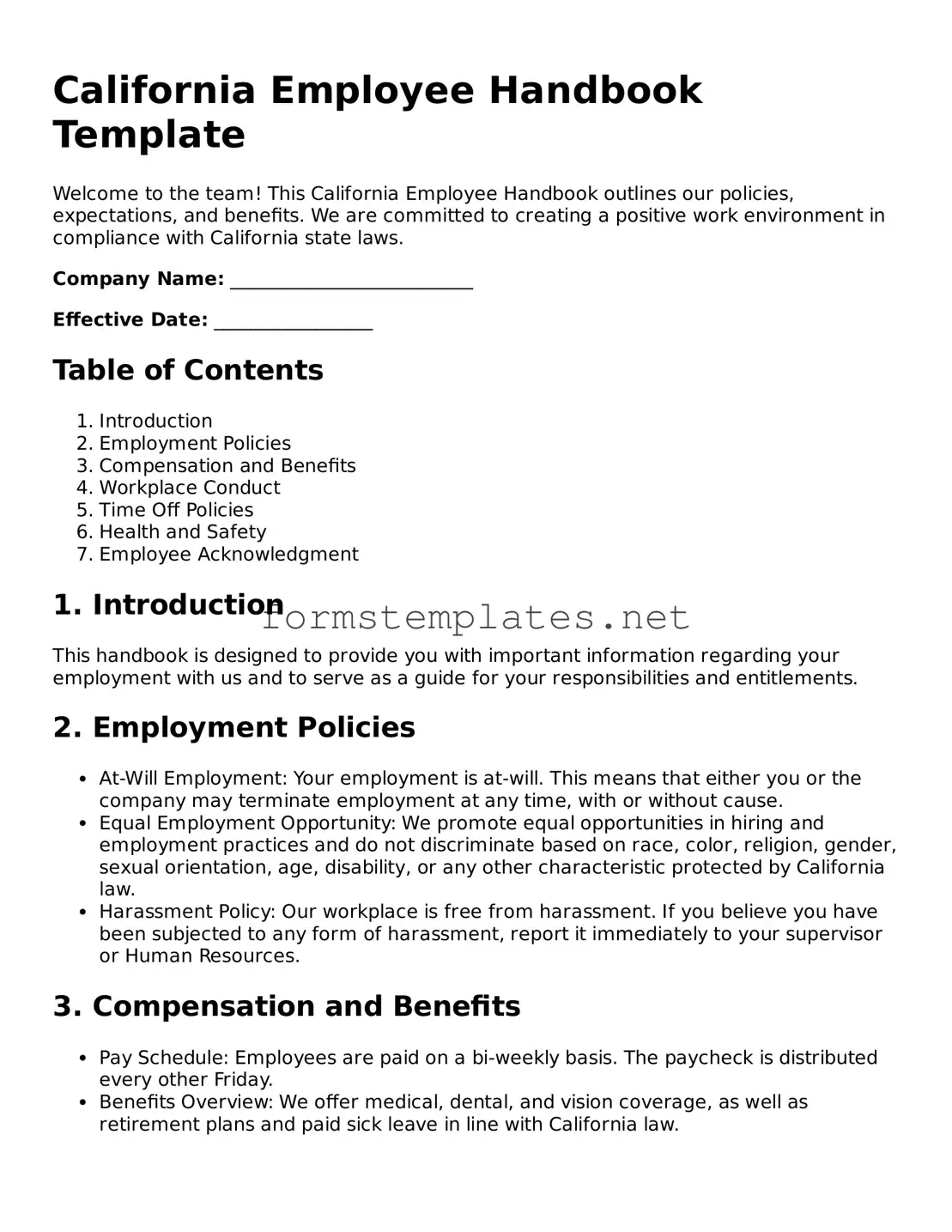California Employee Handbook Template
Welcome to the team! This California Employee Handbook outlines our policies, expectations, and benefits. We are committed to creating a positive work environment in compliance with California state laws.
Company Name: __________________________
Effective Date: _________________
Table of Contents
- Introduction
- Employment Policies
- Compensation and Benefits
- Workplace Conduct
- Time Off Policies
- Health and Safety
- Employee Acknowledgment
1. Introduction
This handbook is designed to provide you with important information regarding your employment with us and to serve as a guide for your responsibilities and entitlements.
2. Employment Policies
- At-Will Employment: Your employment is at-will. This means that either you or the company may terminate employment at any time, with or without cause.
- Equal Employment Opportunity: We promote equal opportunities in hiring and employment practices and do not discriminate based on race, color, religion, gender, sexual orientation, age, disability, or any other characteristic protected by California law.
- Harassment Policy: Our workplace is free from harassment. If you believe you have been subjected to any form of harassment, report it immediately to your supervisor or Human Resources.
3. Compensation and Benefits
- Pay Schedule: Employees are paid on a bi-weekly basis. The paycheck is distributed every other Friday.
- Benefits Overview: We offer medical, dental, and vision coverage, as well as retirement plans and paid sick leave in line with California law.
4. Workplace Conduct
- Attendance: Regular attendance is essential. Please inform your supervisor if you must be absent.
- Dress Code: Our dress code is business casual. Please dress appropriately for the work environment.
5. Time Off Policies
- Vacation: Employees are entitled to paid vacation days, which accrue based on your length of service.
- Sick Leave: In accordance with California law, employees are entitled to paid sick leave.
- Holidays: We observe federal holidays. A list of observed holidays will be distributed annually.
6. Health and Safety
Your safety is our priority. We comply with California occupational health and safety standards. Report any unsafe conditions to your supervisor immediately.
7. Employee Acknowledgment
Please sign below to acknowledge that you have received this handbook and understand its contents:
Employee Name: __________________________
Signature: __________________________
Date: _________________
Thank you for being a part of our team! We look forward to a successful working relationship.
